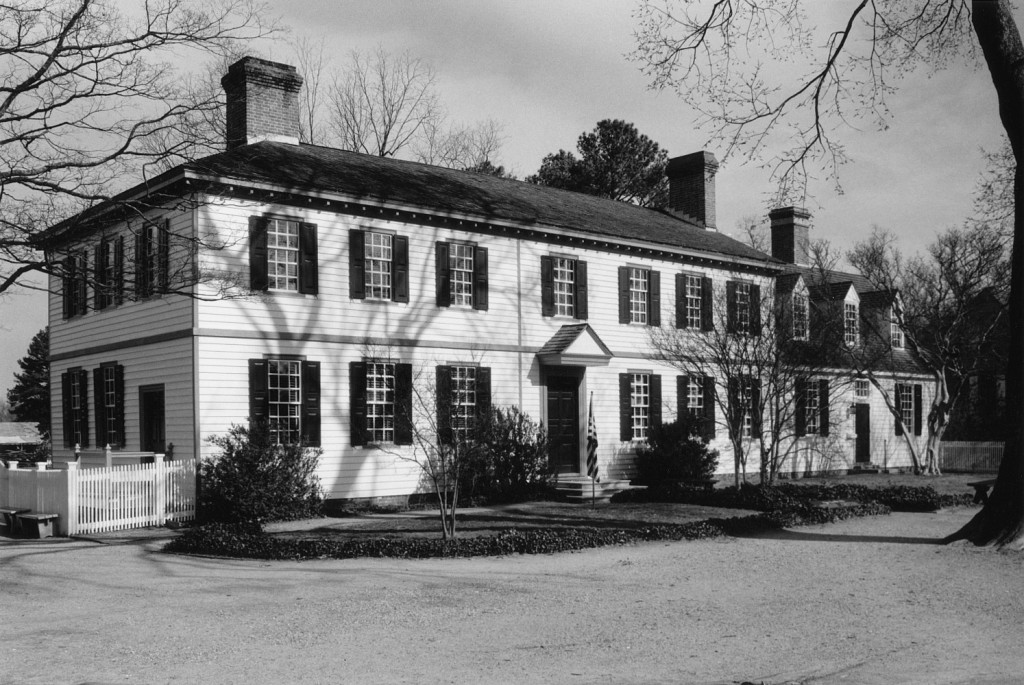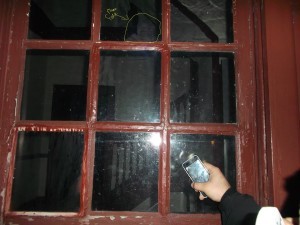Posted on August 15, 2017
PEYTON RANDOLPH HOUSE – COLONIAL WILLIAMSBURG
The Peyton Randolph house is an infamous mansion in Colonial Williamsburg and has much to hide.

Image Source: Dhr.virginia.gov
Over the last few years, the entertainment industry has really gone horror happy. These days, zombies, circus freaks, and vampires hog the camera more than television stars, and plenty of fright flicks (Paranormal Activity, for example) have picked up their own cultish followings. So from a wider cultural standpoint, you can’t deny it: fear is in. But for trend extremists, a horror binge on Netflix is not enough to satisfy goose bump cravings. What they want is the real, raw deal. The best place in America to experience this? Williamsburg, Virginia.
Ghost Hunter Ulimate Paradise
If you are no history buff, here is why Colonial Williamsburg is a ghost hunter’s ultimate paradise. Step back in time, to the 1700s, and you will find the city bustling with commercial and political activity alike. As one of first planned cities in the United States, Williamsburg, Virginia was where the likes of George Washington, Patrick Henry, and Thomas Jefferson convened to blueprint democracy; where the seeds of American freedom were first planted; where plantations bloomed and big businesses flourished. But it was also where injured troops found refuge, the mentally ill sought treatment, and slaves fought for freedom.
So with a history riddled in the pains and struggles of others, you can be sure that Williamsburg is a site that is bubbling with poltergeists and paranormal activity.
That’s why what fans of the supernatural have bookmarked on their desktops isColonial Ghosts – it offers guided ghost tours to multiple haunted destinations in Colonial Williamsburg, including the infamous Peyton Randolph House, located at the corner of Nicholson and North England Streets.
An idea conceived in 1715 by Sir William Robertson, this two story, L-shaped, Georgian-style structure (also known as the Peachy-Randolph House) spent its early years in the hands of the bureaucratic elite, of which the revolutionary leader, Peyton Randolph, is one of the most notable.

Artist: (John Wollaston (1710–1775) / Image Source: Wikipedia
Peyton Randolph
The son of Sir John Randolph, who served as the Speaker of the House of Burgesses, Peyton Randolph followed in his father’s footsteps and became a prominent political figure in colonial Williamsburg, though he is most famous for his position as the first president of the Continental Congress. When his mother, Lady Susannah Beverley Randolph, passed away in 1754, Peyton finally became the true patriarch of his childhood home.
To be the home of a family with such a strong presence in the political realm of Colonial Williamsburg meant that the Peyton Randolph House attended to many distinguished guests, including Peyton’s cousin, Thomas Jefferson, and French nobleman Jean-Baptiste-Donatien de Vimeur, Comte de Rochambeau. Hence, if Sir William Robertson were alive to see how it presently stands, he would be amazed by how it has grown in both size and extravagance.
Design: Three Distinct Units
What modern tourists can experience today is a lavish structure composed of three distinct units. The first section that was built, the western wing, contains a total of eight rooms (four on each of its two levels), as well as an impressive central chimney and two-story porch. The eastern wing and middle portion were then added to it by John and Peyton Randolph, respectively, with construction beginning in 1724. Of these three parts, the east wing is the smallest.
Interestingly, though, when the site was named a National Historic Landmark in 1970, it was the only portion which remained off limits to the public1, as its owner at the time, Mr. Carlisle H. Humelsine, stipulated that it was to stay as a private residence.
So besides ghost sightings, the house’s impeccable design is what also draws in flocks of visitors. Restoration of the house, similar to its construction, underwent several phases, but much of its original elements lie well intact – an exterior façade of exposed red brick, marble mantels crowning corner fireplaces, interior panels carved expertly from walnut wood, locks of fine brass, and so on.

Image Source: RevolutionaryDay.com
Other Families
But behind all this opulence, lurks plenty of pain. Betty Randolph, wife of Peyton, may have appeared quite refined in public, but was not so ladylike when it came to treating her slaves. Some believe that one of her mistreated attendants, Eve, cursed the house when she was cruelly separated from her son.
Other families who occupied the Randolph house have left their blemishes on the property as well. When the Peachy family took over, for instance, not only did the building moonlight as a hospital for wounded soldiers, but also became where multiple people met their tragic ends. Colonial Ghosts rehashes:
“One of the Peachy boys was climbing a tree in the 19th century, when the branch broke and he fell to his death. A young girl living on the second floor fell out of her window to her death. A confederate veteran attending the College of William and Mary suddenly and mysteriously fell ill and died in the house. Later in the 18th century, two men staying at the house entered a heated argument and shot and killed each other.”
But ghostly encounters were reported at the mansion even earlier. A stop on his 1824 tour of the United States, the Peyton Randolph House was where French General of the American Revolution, Marquis de Lafayette, experienced much more than Mary Monroe Peach’s hospitality. The general left with stories of being awoken by voices in the middle of the night, of sensing a hand rest eerily on his shoulder.
Similar Tales of Unexplained Occurences
Other colonists on the house’s guest list departed with similar tales of unexplainable occurrences: coming across a glowing male figure in one of the bedrooms; hearing heavy boots stomping through the halls; discovering furniture mysteriously moved. And visitors have met spirits ever since, with plenty of Colonial Ghosts’ guests actually documenting their spooky encounters3.

Image Source: Colonial Ghosts
“My friend shined his flashlight into the window on the first floor on the left side and we were looking around. I guess I was the only one who saw it, but there was a small ball like the size of two fists and it started at the top left corner of the door and went to the bottom of the upper flight of stairs and then to the ceiling and disappeared.”
-Ryan, January 31, 2015, at the Peyton Randolph House.
Some people have been lucky enough to only hear the activities of poltergeists – mirrors shattering, children giggling, a woman singing to herself, etc. But many have been less fortunate. One of the property’s security guards, for instance, was held down by some angry force as it proceeded to trap him in the basement.
There are plenty of politics and poltergeists in the Peyton Randolph House. Whether it’s from a slave’s hateful jinx, or from a past well stained with the deaths and agony of the insane, the enslaved, and the wounded, the Peyton Randolph House is undoubtedly one of the most haunted places in Colonial Williamsburg.
Works Cited
- “Peyton Randolph House; Randolph-Peachy House.” National Register of Historic Places Inventory – Nomination Form. The United States Department of the Interior National Park Service. Last updated 2 November 2013. Web. 22 July 2015.
- “Hauntings Reported on Tours.” Colonial Ghosts. Colonial Ghosts, 2015. Web. 22 July 2015.

